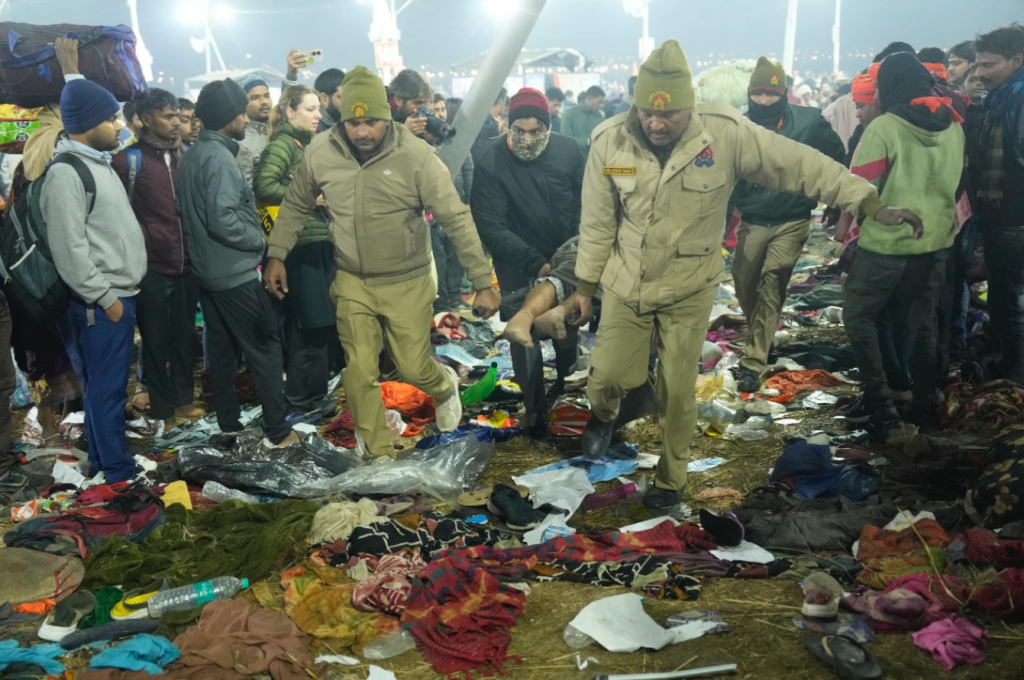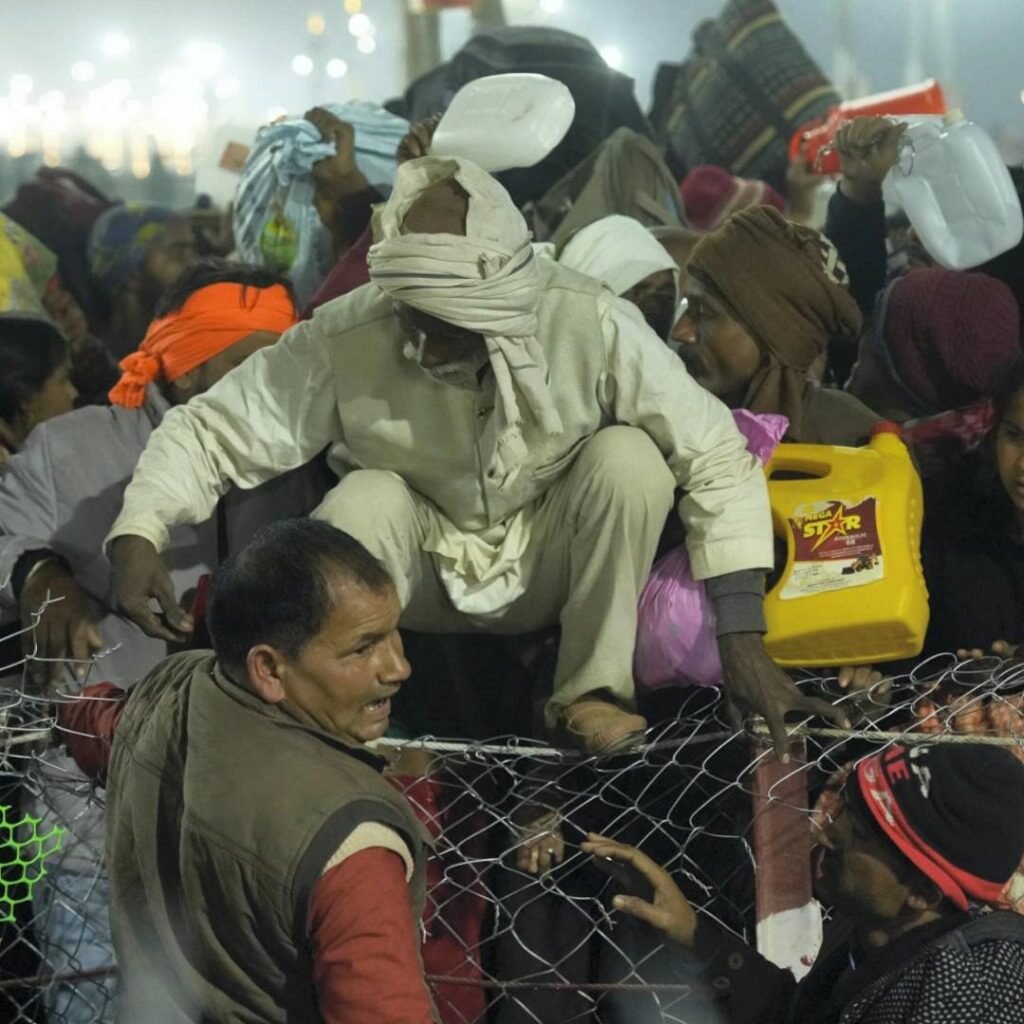
In a recent tragic turn of events, a devastating stampede during the Mahakumbh Mela at the Triveni Sangam in Prayagraj has resulted in the feared death of over 10 pilgrims.
The incident occurred during the sacred Mauni Amavasya, attracting millions for the ‘Amrit Snan’ at the confluence of the Ganga, Yamuna, and the mythical Saraswati rivers.
The tragedy struck around 2:30 am when barriers gave way under the pressure of the crowd, leading to panic and a rush that caused people to fall and get trampled.
Emergency services were quickly mobilized, with ambulances transporting the injured to nearby medical facilities within the Mela grounds.
Special Executive Officer Akanksha Rana confirmed the incident, stating, “A stampede-like situation arose after some barriers broke.
Some people have been injured and are under treatment.” However, the situation was evidently more severe given the casualty reports.
In response to the calamity, Prime Minister Narendra Modi, after a conversation with Uttar Pradesh Chief Minister Yogi Adityanath, issued directives for immediate assistance to the victims.

Condolences were offered to those who lost family members, and hopes for recovery were extended to the injured.
The Akharas, pivotal to the Kumbh’s spiritual activities, decided against their ‘Amrit Snan’ for Mauni Amavasya out of respect for the deceased.
Mahant Ravindra Puri from the Akhil Bharatiya Akhara Parishad noted, “We have decided to call off our ‘snan’ on ‘Mauni Amavasya’ following the morning’s tragedy.”
This incident has raised questions about the safety and crowd management strategies at the Kumbh Mela, which hosts an estimated 10 crore visitors.
The local government has now intensified security measures and medical preparedness, with over 1,000 doctors on site and enhanced surveillance technology.
As the Mahakumbh Mela continues until February 26, the focus turns towards better managing the massive crowds while ensuring the spiritual essence of the gathering remains intact.
This tragic event underscores the critical need for robust safety protocols to prevent such losses in the future.

